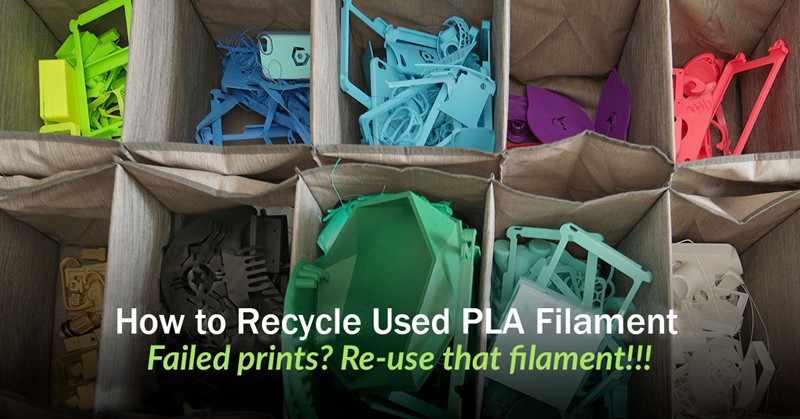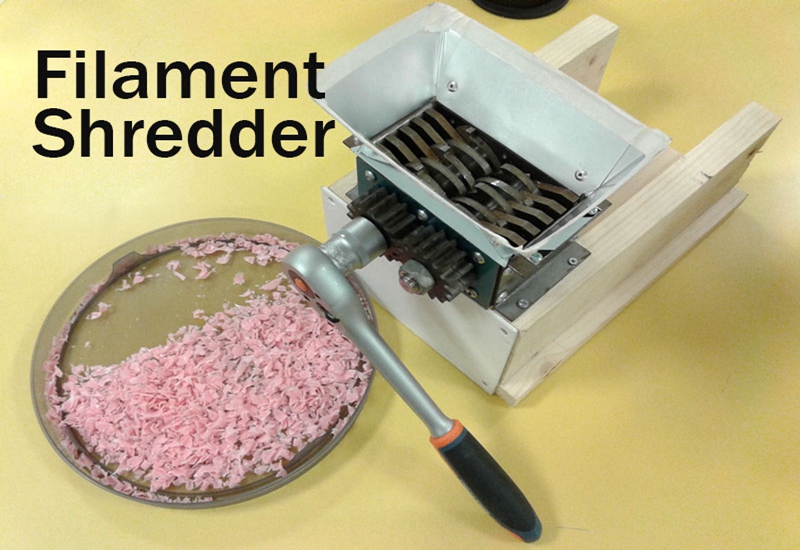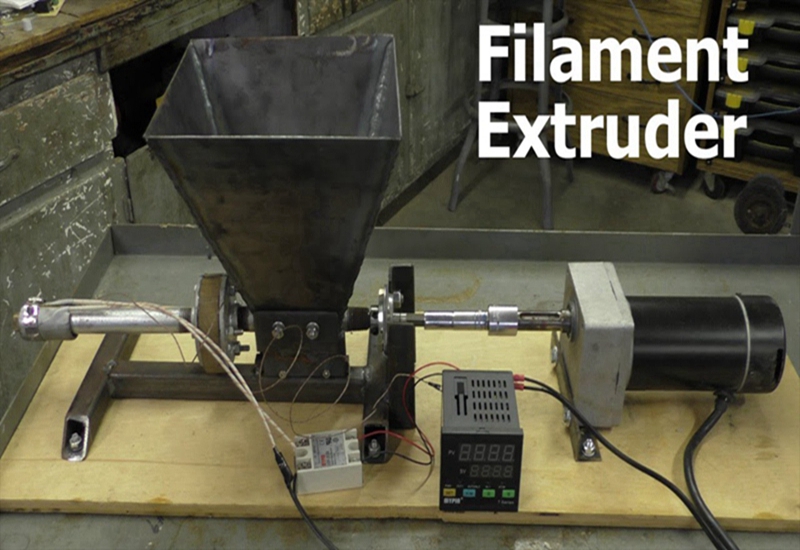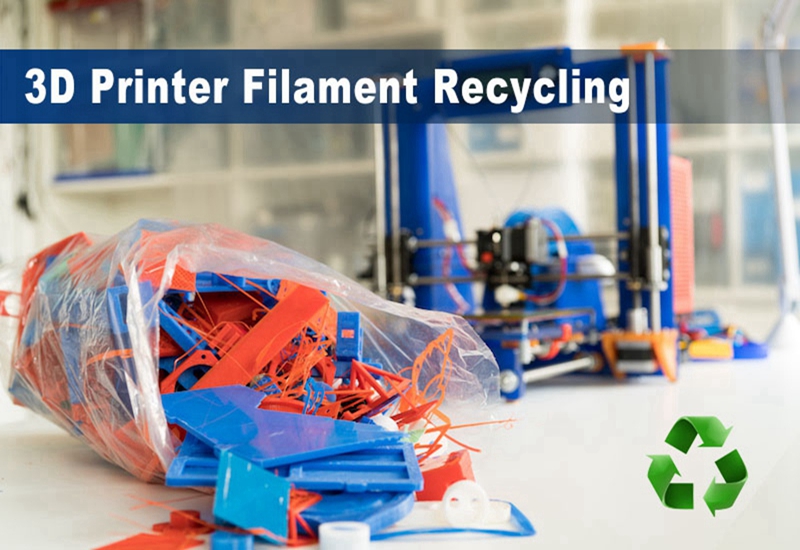3D printing has been touted as a way to reduce the impact we have on our environment. However, most of the time we’re all too much familiar with a pile of failed 3D prints, which exert a negative impact on the environment surrounding us. Today, with PLA being a very popular 3D printing material for makers, the number of PLA printed objects are already enormous. So, what do you do with your waste, disposed or failed PLA prints? In this article, we’ll mainly show you 2 ways on how to recycle used PLA filament to reduce environmental footprint and increase sustainability.
1. Use Filament Recycling Machine
If you want to recycle your used PLA filament on your own, you’ll first need two pieces of equipment: a shredder and an extruder. Essentially, you feed your old print into the shredder, which, as you might expect, shreds it into pieces. Then, these shards are fed into the extruder, which heats and shapes them into something you can actually use.
This recycling process is generally referred to as filament extrusion which usually consists of three steps: 1) Break down old parts or failed prints with a shredder; 2) Melt down and extrude filament with an extruder; 3) Wind filament onto new spool.
First, old parts or failed prints are smashed into very small pieces, making it much easier to melt down. Once heated and melted, the now liquid plastic is forced through a tiny opening, and then cooled down before winding onto a filament spool. This is an excellent way to reuse the scrap filament from failed prints or small bits of filament that wouldn’t otherwise be useful.
However, be sure not to mix different types of filaments when using a filament recycling machine, otherwise it may result in poor printing results. Each type of filament has different characteristics such as melting temperature, shrinkage rate and viscosity. As a matter of fact, even combining different brands of the same material can have unexpected or undesired results.
2. Use Filament Recycling Service
Theoretically speaking, most 3D-printed parts are recyclable. But it also depends largely on which material you’re using. ABS can generate some nasty fumes and chemicals, so it tends to always end up in landfills. However, PLA is a more environmental-friendly material and it’s biodegradable since it’s usually made from materials like sugar cane, cornstarch, or tapioca root, etc.
One of the easiest options is to compost PLA in an industrial facility. Of course, you can use filament recycling service provided by some filament recyclers such as Filabot. Just box up your PLA, mail it, and they’ll recycle it.
The best PLA end-of-life option is recycling. According to a European study, it appears that the environmental impact of recycling PLA is over 50 times better than composting and 16 times better than combusting PLA! Therefore, 3D makers should recycle their used PLA filament or failed PLA prints.
Though it might seem like a lot of work, filament recycling is a much more economical way to print in the long run. By following above-mentioned instructions on how to recycle used PLA filament, you can achieve the impossible and make a difference – creating high-quality 3D models with almost zero waste and minimum impact on the environment, thus making 3D printing “greener” to reduce our environmental footprint and increase sustainability.
Post time: Jul-29-2019




